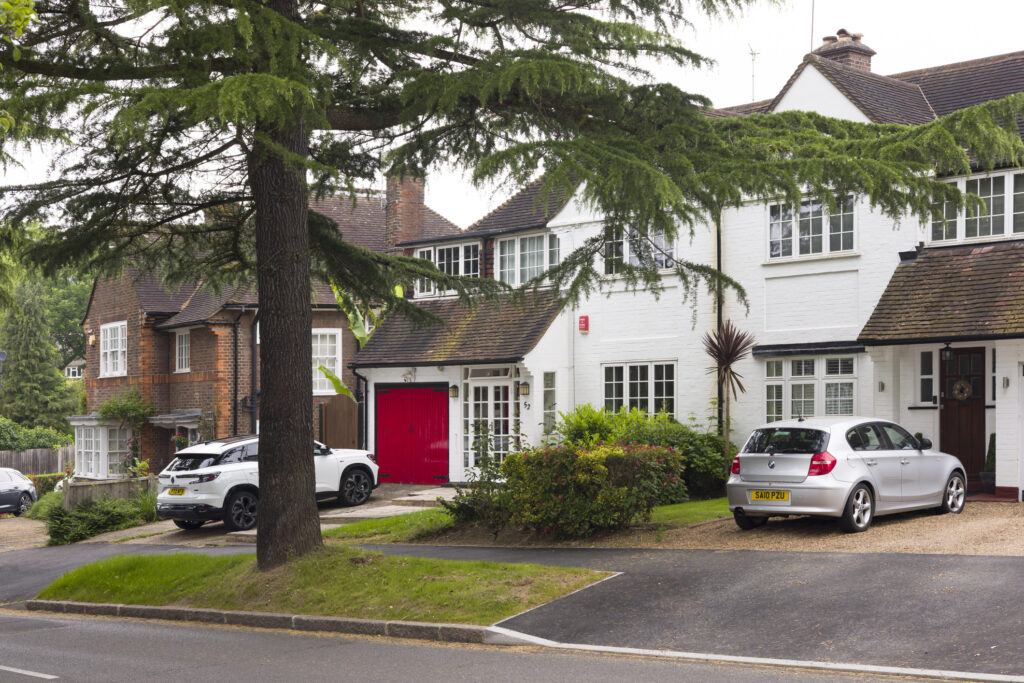
Dropped kerbs are not just for the convenience of getting your car onto your drive, they are a legal requirement allowing for off street parking to benefit your property, ensure safety for pedestrians and ensure the under-pavement infrastructure is adequately protected.
I must admit that until this issue was raised as part of an enquiry for a purchase client, I did not realise what was involved nor how costly it can actually be.
Why a dropped kerb is vital
To put it simply, there are several reasons that a dropped kerb is vital:
Legal Compliance: Under the Highways Act 1980 it is an offense to drive over a footway without a dropped kerb.
Preventing Damage: Regularly driving over a standard kerb can damage the pavement and any underlying utilities.
Safety: A dropped kerb provides a smooth transition from road to driveway, reducing the risk of accidents.
Avoiding Penalties: Unauthorised access can lead to fines and enforcement actions by local authorities.
Permission
You need permission from the local council, and this must be obtained before putting in a dropped kerb. The process typically involves:
- Submitting an application: Apply through your local council's website or planning portal.
- Site Assessment: The council will assess factors like road safety, proximity to junctions and impact on pedestrian pathways.
- Planning Permission: this will be required if:
- Your property is on a classified road (A, B, or C road).
- The house is situated within a conservation area or on a listed building.
- Structural changes are needed to create a parking area
Don’t just assume that if there is already a dropped kerb outside your neighbour’s house that your application will be readily approved.
Hiring a contractor
Once approved, hire a contractor authorised by the council to carry out the work. It is essential to use a contractor approved by your local council to ensure compliance with regulations.
Your approved contractor will then undertake:
Excavation: to remove the existing kerbstones and pavement.
Kerb Lowering: Installing new sloped kerbstones to create a smooth transition from the highway and over the footpath.
Pavement Strengthening: Reinforcing the pavement to take the vehicle weight.
Finishing Touches: Ensuring proper drainage and alignment with existing road surfaces.
Needless to say, there are costs involved in your getting a dropped kerb fitted which may stretch to raising any old dropped kerbs, an inspection fee, planning permission fees, costs for tree root depth inspection, the installation cost of the dropped kerb, potential costs for adjusting the level of your property or adding extra drainage and fees for moving utilities or street lights if required.
Also, bear in mind that if you are a leaseholder or renting, you will need written permission from your landlord. If you own the property, check your deeds to ensure that parking a vehicle is even allowed upon your property. Remember that gates on your property leading out to the dropped kerb must open towards your property and not onto the road or pavement.
The council can refuse the application if specific conditions are not met or if your home is on a bend or at a road junction. There should also not be obstructing trees in the proposed crossing area, and you should have sufficient garden area and clear visibility to allow you access onto the road.
A property with a drive and parking is more appealing if it has a dropped kerb in place than a property with a drive and parking but no dropped kerb since the application process and costs may deter a potential buyer. The fines for causing damage to the existing pathway may also deter a buyer so the best advice is to get the works completed prior to marketing to produce your home to the best advantage.
Next Steps…
If you need any advice on the above, or for anything else Conveyancing related, please call me on 01283 214231 or email j.stewart@timms-law.com
For more information on Conveyancing, visit our webpage here.




